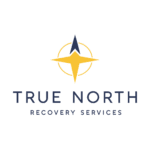Addiction is a complex brain disorder that affects millions of people worldwide, manifesting in various forms that extend far beyond traditional substance use. There are two main forms of addiction: substance use disorders and behavioral addictions, each presenting unique challenges and requiring specialized treatment approaches. Understanding the different addiction types is crucial for recognizing warning signs, seeking appropriate help, and supporting recovery. This comprehensive guide explores the spectrum of addictive behaviors, from chemical dependencies to process addictions, providing insights into their characteristics, effects, and treatment options.
What Is Addiction?
Is addiction a disease or a choice?
Addiction is a complex condition, a brain disease that is manifested by compulsive substance use despite harmful consequence. It’s not a moral failing or lack of willpower, but a chronic medical condition that changes brain chemistry and function. Addiction involves compulsive engagement in rewarding behaviors despite adverse consequences.
How does addiction develop in the brain?
Addiction hijacks the brain’s reward system by flooding it with dopamine. Substances send massive surges of dopamine through your brain, too, as well as certain activities, like having sex or spending money. Over time, the brain adapts to these surges, requiring more of the substance or behavior to achieve the same effect, leading to tolerance and dependence.
Major Categories of Addiction
Substance Use Disorders
Substance use disorders involve the misuse of drugs, alcohol, or other chemical substances that alter brain function. These are the most recognized and studied forms of addiction.
Alcohol Use Disorder (AUD)
Alcohol addiction remains one of the most prevalent substance use disorders globally. It’s characterized by:
- Inability to control alcohol consumption
- Continued drinking despite negative consequences
- Physical withdrawal symptoms when stopping
- Tolerance requiring increased amounts to achieve desired effects
Opioid Use Disorder (OUD)
The opioid crisis has highlighted this dangerous addiction category, which includes:
- Prescription painkillers (oxycodone, morphine, fentanyl)
- Illegal opioids (heroin)
- Synthetic opioids
What are the signs of opioid addiction?
Key indicators include increased tolerance, withdrawal symptoms, inability to quit despite wanting to, neglecting responsibilities, and engaging in risky behaviors to obtain drugs. Physical signs may include constricted pupils, drowsiness, and slowed breathing.
Stimulant Addictions
These involve substances that increase alertness and energy:
- Highly addictive powder or crack form
- Causes intense euphoria followed by crashes
- Severe cardiovascular and neurological risks
Methamphetamine Addiction
- Extremely potent and long-lasting effects
- Causes significant dental and skin problems
- High risk of psychosis and cognitive impairment
Amphetamine Addiction
- Includes prescription medications like Adderall
- Often begins with legitimate medical use
- Can lead to severe psychological dependence
Depressant Addictions
Benzodiazepine Addiction
- Includes Xanax, Valium, Ativan
- Often prescribed for anxiety or insomnia
- Dangerous withdrawal requiring medical supervision
Barbiturate Addiction
- Less commonly prescribed today
- Extremely dangerous overdose potential
Hallucinogen Addictions
While less physically addictive, these substances can cause psychological dependence:
- LSD (Acid)
- PCP (Angel Dust)
- Ketamine
- MDMA/Ecstasy
Cannabis Use Disorder
Can marijuana be addictive?
Yes, marijuana can be addictive, particularly with today’s high-THC products. Cannabis use disorder affects approximately 9% of users, with rates increasing to 17% among adolescent users and 25-50% among daily users.
Behavioral Addictions (Process Addictions)
Behavioral addictions may include gambling addiction, shopping addiction, stalking, pornography addiction, internet addiction, social media addiction, video game addiction, and sexual addiction. These involve compulsive behaviors rather than substances.
Gambling Disorder
If you have a problem with compulsive gambling, you may continually chase bets that lead to losses, use up savings and create debt. This is the only behavioral addiction officially recognized in the DSM-5.
Signs of gambling addiction:
- Chasing losses with bigger bets
- Lying about gambling activities
- Borrowing money to gamble
- Neglecting work or family responsibilities
Internet and Technology Addictions
Internet Gaming Disorder
- Excessive online gaming affecting daily life
- Loss of interest in other activities
- Continued gaming despite negative consequences
Social Media Addiction
- Compulsive checking of social platforms
- Anxiety when unable to access accounts
- Comparing self to others online constantly
General Internet Addiction
- Excessive time spent online
- Withdrawal symptoms when offline
- Neglecting real-life relationships and responsibilities
Sex and Pornography Addiction
Also known as hypersexual disorder, compulsive sexual behavior, or sex addiction, involves continued engagement in sexual activities despite the negative consequences. This includes:
- Compulsive sexual behavior
- Pornography addiction
- Risky sexual encounters
Shopping and Spending Addictions
Compulsive Buying Disorder
- Uncontrollable urge to purchase items
- Shopping as emotional regulation
- Financial problems from excessive spending
- Guilt and anxiety after shopping sprees
Food-Related Addictions
Binge Eating Disorder
- Frequent episodes of overeating
- Feeling out of control during binges
- Eating alone due to embarrassment
Sugar Addiction
- Cravings for sweet foods
- Withdrawal symptoms when reducing sugar
- Using sugar to cope with emotions
Exercise Addiction
What is exercise addiction?
Exercise addiction occurs when physical activity becomes compulsive and interferes with daily life. Signs include exercising through injury, anxiety when unable to exercise, and prioritizing workouts over relationships or work responsibilities.
Work Addiction (Workaholism)
- Compulsive need to work constantly
- Inability to relax or take breaks
- Work interfering with personal relationships
- Using work to avoid emotions or problems
Risk Factors for Developing Addiction
Biological Factors
| Factor | Description | Impact Level |
|---|---|---|
| Genetics | Family history of addiction | High |
| Brain Chemistry | Natural dopamine levels | Moderate-High |
| Mental Health | Depression, anxiety, PTSD | High |
| Age of First Use | Earlier use increases risk | Very High |
Environmental Factors
- Peer pressure and social influences
- Trauma and adverse childhood experiences
- Stress and life changes
- Availability and accessibility of substances/behaviors
- Cultural and societal norms
Psychological Factors
Why do some people become addicted while others don’t?
Individual vulnerability to addiction depends on a complex interaction of genetic predisposition (accounting for 40-60% of risk), environmental factors, and psychological traits. People with certain personality traits, mental health conditions, or coping mechanisms may be more susceptible to developing addictive behaviors.
Signs and Symptoms of Addiction
Universal Warning Signs
Regardless of the specific addiction type, common indicators include:
- Loss of Control: Inability to stop despite wanting to
- Tolerance: Needing more to achieve the same effect
- Withdrawal: Physical or emotional distress when stopping
- Neglecting Responsibilities: Work, family, and social obligations suffer
- Continued Use Despite Consequences: Persisting despite obvious harm
- Preoccupation: Constant thoughts about the substance or behavior
Physical Symptoms
- Changes in sleep patterns
- Appetite fluctuations
- Physical deterioration
- Health problems related to the addiction
- Withdrawal symptoms (sweating, shaking, nausea)
Behavioral Changes
- Secrecy and lying about activities
- Social isolation
- Mood swings and irritability
- Risky or dangerous behaviors
- Financial problems
- Legal issues
Psychological Symptoms
- Anxiety and depression
- Paranoia or delusions
- Memory and cognitive problems
- Emotional instability
- Suicidal thoughts
The Cycle of Addiction
Understanding the addiction cycle helps explain why recovery is challenging:
- Trigger: Stress, emotions, or environmental cues
- Craving: Intense desire for the substance or behavior
- Use/Engagement: Acting on the craving
- Temporary Relief: Short-term satisfaction or escape
- Negative Consequences: Problems and regret
- Promise to Stop: Determination to quit
- Return to Triggers: Cycle begins again
Co-occurring Disorders
What is dual diagnosis?
Dual diagnosis refers to having both an addiction and a mental health disorder simultaneously. Common co-occurring conditions include depression, anxiety, PTSD, bipolar disorder, and ADHD. These conditions often fuel each other, requiring integrated treatment approaches.
Treatment Approaches for Different Addiction Types
Evidence-Based Treatments
Cognitive Behavioral Therapy (CBT)
- Identifies and changes thinking patterns
- Develops coping strategies
- Prevents relapse
Motivational Interviewing
- Enhances motivation to change
- Resolves ambivalence about recovery
- Client-centered approach
Dialectical Behavior Therapy (DBT)
- Teaches emotional regulation
- Particularly effective for behavioral addictions
- Combines mindfulness with practical skills
Medical Interventions
Medication-Assisted Treatment (MAT)
- Methadone, buprenorphine for opioid addiction
- Naltrexone for alcohol and opioid disorders
- Antidepressants for co-occurring disorders
Detoxification
- Medical supervision for withdrawal
- Tapering schedules for safety
- Supportive care during acute phase
Behavioral Interventions
12-Step Programs
- Alcoholics Anonymous (AA)
- Narcotics Anonymous (NA)
- Gamblers Anonymous (GA)
SMART Recovery
- Self-Management and Recovery Training
- Evidence-based approach
- Tools for motivation and behavior change
Prevention Strategies
Individual Prevention
- Education about addiction risks
- Developing healthy coping mechanisms
- Building strong social support networks
- Regular mental health check-ups
- Stress management techniques
Community Prevention
- School-based education programs
- Community support groups
- Accessible mental health services
- Policy changes and regulations
- Reducing stigma around addiction
The Recovery Process
How long does recovery from addiction take?
Recovery is a lifelong process, not a destination. While acute withdrawal may last days to weeks, rebuilding life patterns and maintaining sobriety requires ongoing commitment. Most experts suggest at least 90 days of intensive treatment, followed by long-term support and lifestyle changes.
Stages of Recovery
- Pre-contemplation: Unaware of the problem
- Contemplation: Recognizing the issue
- Preparation: Planning to change
- Action: Actively working toward recovery
- Maintenance: Sustaining changes long-term
Relapse Prevention
Is relapse a sign of treatment failure?
No, relapse is often part of the recovery process and doesn’t indicate treatment failure. Relapse rates for addiction are similar to other chronic diseases like diabetes or hypertension (40-60%). The key is learning from setbacks and strengthening recovery strategies.
Supporting Someone with Addiction
Do’s and Don’ts
Do:
- Express concern without judgment
- Offer specific help and support
- Learn about addiction as a disease
- Take care of your own well-being
- Encourage professional treatment
Don’t:
- Enable addictive behaviors
- Give ultimatums or threats
- Take their addiction personally
- Expect immediate changes
- Give up hope
True North Recovery Services: Comprehensive Addiction Treatment
At True North Recovery Services, we understand that addiction affects everyone differently, which is why we offer personalized, comprehensive treatment approaches for various types of addiction. Located in Denver, Colorado, we provide compassionate outpatient addiction treatment for substance use disorders, including opioid and alcohol use disorders, with a foundation built on kindness, respect, and unwavering support. Our holistic treatment model combines evidence-based therapies, medical care, and recovery support services to help individuals discover their path to lasting recovery. We accept most major insurances and believe that recovery is possible for everyone, regardless of where their journey begins.
If you or a loved one is struggling with any form of addiction, remember that help is available. Contact True North Recovery Services at (720) 669-6793 or visit our Denver location to begin your journey toward recovery and discover the person you were always meant to be.


